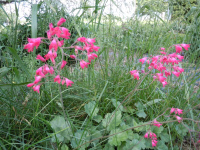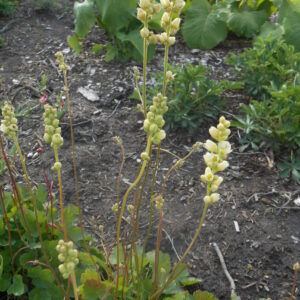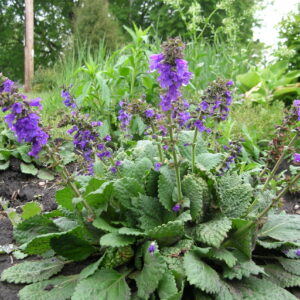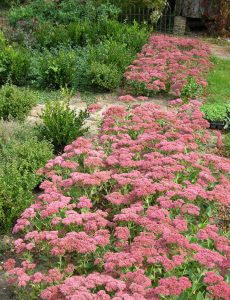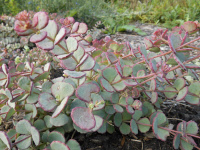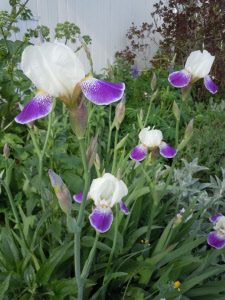Deer Resistant Plants
Showing 73–80 of 163 results
-
Heuchera sanguinea Coral bells, Alumroot Z 3-8
Coral red flowers in late spring through early summer. “One of the finest hardy perennials recently introduced …bright crimson flowers…very graceful,” Farquhar Catalog, 1893.
Coral red flowers in late spring through early summer. “One of the finest hardy perennials recently introduced …bright crimson flowers…very graceful,” Farquhar Catalog, 1893.
Size: 12" x 12"
Care: sun to part shade in moist well-drained soil.
Native: Western U.S.- Rocky MountainsGenus Heuchera named for Johann Heinrich von Heucher (1677-1747) professor of medicine at Wittenburg University. This species collected Be Dr. Frederick Adolph Wislizenus in the Porphyry Mountains of Llanos Mexico on the Col. Doiphan Expedition in 1846-7. Named by Dr. George Engelmann, (1809-1884) physician and avid botanist encouraging and supporting those who explored for plants. He emigrated from Germany and settled in St. Louis. Plant popular in the 1880’s.
-
Heuchera versicolor syn. H. rubescens var. versicolor Pink alumroot Z 4-10
Tiny pink bells on narrow inflorescence blooming mid to late summer
OUT OF STOCK
Tiny pink bells on narrow inflorescence blooming mid to late summer
Size: 8-12” x 12"
Care: prefers part shade in moist well-drained to well drained soil, can grow in sun with moist soil. Deer resistant.
Native: southwestern US
Wildlife Value: attracts bees, butterflies and hummingbirdsFirst collected in 1904 on damp, shady bluffs of the Black Range in New Mexico, accd. to Edward Lee Greene.
The roots are astringent and can also be used as an alum substitute, used in fixing dyes. Was also used medicinally for fever, diarrhea, venereal disease, liver ailments, eyewash, colic and animal care. Heuchera is named for Johann Heinrich von Heucher (1677-1747), while rubescens means becoming red or reddish, and versicolor means variously colored.
-
Horminum pyrenaicum Dragonmouth, Pyrenean Dead-nettle Z 5-9
Deep purple salvia-like blooms in April to May above rosettes of wide, flat leaves
Deep purple salvia-like blooms late spring to early summer above rosettes of wide, flat leaves
Size: 8-16” x 12”
Care: Sun to part shade in moist well-drained soil. Drought tolerant.
Native: Pyrenees & Alps
Wildlife Value: Attracts bees, butterflies and birds. Deer and rabbit resistant.Before 1753, Linnaeus.
-
Hylotelephium herbstsfreude syn Sedum ‘Autumn Joy’ Z 4-9
Classic, large flat flower heads turn from green to rose
Classic, large flat flower heads turn from green to rose blooming in September and October. A staple for autumn in the garden.
Size: 30” x 12”
Care: full sun in well-drained soil
Wildlife Value: Attracts many bees and butterflies. Black walnut tolerant, deer resistant.
Awards: England’s Royal Horticultural Society Award of Garden Merit.Autumn Joy introduced to gardens before 1920 by the George Arends Nursery in Ronsdorf, Germany.
-
Hylotelephium sieboldii syn Sedum sieboldii, October Daphne Z 3-9
Fleshy gray-green foliage edged with pink encircles the prostrate stems, flowering strawberry pink in fall. Perfect for rock gardens, front of border, fairy gardens, roof gardens, troughs and groundcover or anyplace with drought.
Fleshy gray-green foliage edged with pink encircles the prostrate stems, flowering strawberry pink in fall. Perfect for rock gardens, front of border, fairy gardens, roof gardens, troughs and groundcover or anyplace with drought.
Size: 4" x 8"
Care: full sun in moderately fertile, well-drained soil.
Native: Japan
Wildlife Value: Drought tolerant and deer resistant.
Awards: Elisabeth Carey Miller Botanical Garden Great Plant PickSedum means “plant that sits.” “Live forever” is an ancient Greek name for sedums. The Roman Pliny claimed that sedum’s juice treated wounds. In the 1500’s English herbalist Gerard called sedums “very full of life,” referring to succulent’s quality of being very easy to grow. This species named for its discoverer, Dr. Philipp Franz von Siebold (1791-1866). Von Siebold, a German doctor, worked for the Dutch East India Company as its resident physician on Deshima Island, off the coast of Japan. He boldly became too knowledgeable about Japanese affairs and was imprisoned by the Japanese in 1826 and then banished in 1828. When he left he carried nearly 500 plants with him to Europe. William Robinson, father of the mixed perennial border, described Sedum sieboldii as beautiful. He advised gardeners to grow it “in strong loam and mortar rubble in fully exposed positions (and use it as) an excellent plant for vases in summer.”
-
Iris ‘Wabash’ Z 3-8
Pure white standards with deep purple falls edged in white and a bright yellow beard in late May-early June. “A new iris so far in advance of others of similar color combination that they are simply not in the race.” Cooley’s Gardens catalog, 1938
Pure white standards with deep purple falls edged in white and a bright yellow beard in late May-early June. “A new iris so far in advance of others of similar color combination that they are simply not in the race.” Cooley’s Gardens catalog, 1938
Size: 39" x 8"
Care: sun in moist well-drained soil. In July-August lift & divide every 2 to 3 years; discard mushy rhizomes.
Wildlife Value: Deer and rabbit resistant.
Awards: Dykes award (best iris in world) winner 1940.Iris is named after the Greek goddess who accompanied the souls of women to the Elysian Fields by way of the rainbow. Her footprints left flowers the colors of the rainbow. Iris means the eye of heaven. The iris is the flower of chivalry, having “a sword for its leaf and a lily for its heart.
Hybridized by Mary Williamson in 1936, daughter of famed iris hybridizer E.B. Williamson. She became a renowned hybridizer in her own right. ‘Wabash’, is a cross of ‘Dorothy Dietz’ with ‘Cantabile.’ -
Iris missouriensis Western blue flag, Rocky Mountain iris Z 3-8
In spring variegated, violet blue iris flowers - 6 perianth segments, 3 spreading to reflexed falls with a dark yellow-orange stripe down the middle with blue lines on a white background, & 3 purple standards.
In spring variegated, violet blue iris flowers – 6 perianth segments, 3 spreading to reflexed falls with a dark yellow-orange stripe down the middle with blue lines on a white background, & 3 purple standards.
Size: 12-24” x 9-12”
Care: sun to part shade in moist well-drained to moist soil. Divide regularly.
Native: Alberta and British Columbia, from Minnesota to Washington south to California east to New Mexico
Wildlife Value: Deer resistant. Attracts hummingbirds, provides pollen to bees.Named for the Missouri River although ironically Lewis collected it along the Blackfoot River in today’s Montana on July 5, 1806.
Paiute Indians of eastern California and southeastern Oregon made ear drops to remedy earaches with a decoction if the Iris roots. -
Iris pumila Dwarf iris Z4-8
Natural hybrid created this tiny, purple bearded iris blooming in early spring bearing year-long green-grey sword-shaped leaves. Spreads to form large, tight clumps.
Natural hybrid created this tiny, purple bearded iris blooming in early spring bearing year-long green-grey sword-shaped leaves. Spreads to form large, tight clumps.
Size: 6-8” x spreading.
Care: sun in well-drained to moist well-drained soil
Native: Eastern Europe
Wildlife Value: deer resistantIn gardens before 1753

